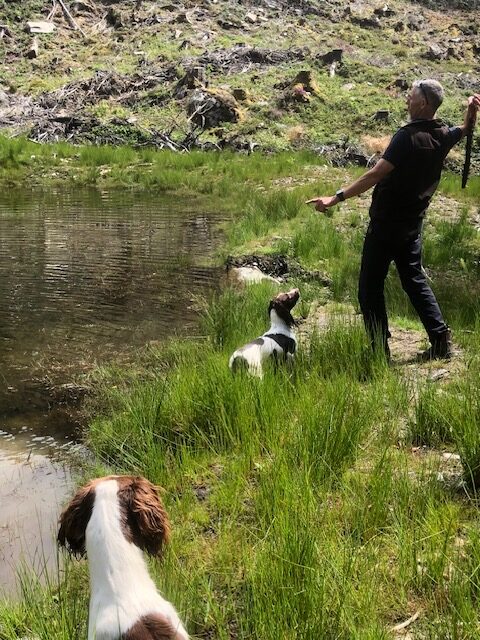
Late summer sees the Snowdonia Forest at its lushest. “Tulgey’ is Lewis Carroll’s word for it, though it’s sheep, not the Jabberwock, that emerge from the leafy depths of the wood. We are watching the gradual filling of the new pond. We only discovered a little stream coursing down a fold in the hillside when we felled the tall spruce, to go to their destination as rafters and purlins. The stream crosses the forest road at the bottom in a culvert; block that and its water naturally fills a depression, maybe thirty yards long and wide, around what instantly became a birch-crowned island.
Then along comes Will, our forester, bringing his two white spaniels. Springers, mother and daughter. Spring? They belly-flopped noisily in, paddled to the island, scrambled up over it and trotted back to shake their coatsful of water all over us. Instantly, da capo. The performance went on into the afternoon while we measured some of the tallest trees around us. 140 feet seemed a good result since they were planted in 1964 by the Forestry Commission. In a well-rained-on part of the world (at 60 inches a year North Wales qualifies) a yard a year is good average growth. In technical forestry terms ‘Yield Class 20’ means 20 cubic metres of timber are added per hectare per year. Not bad going.



